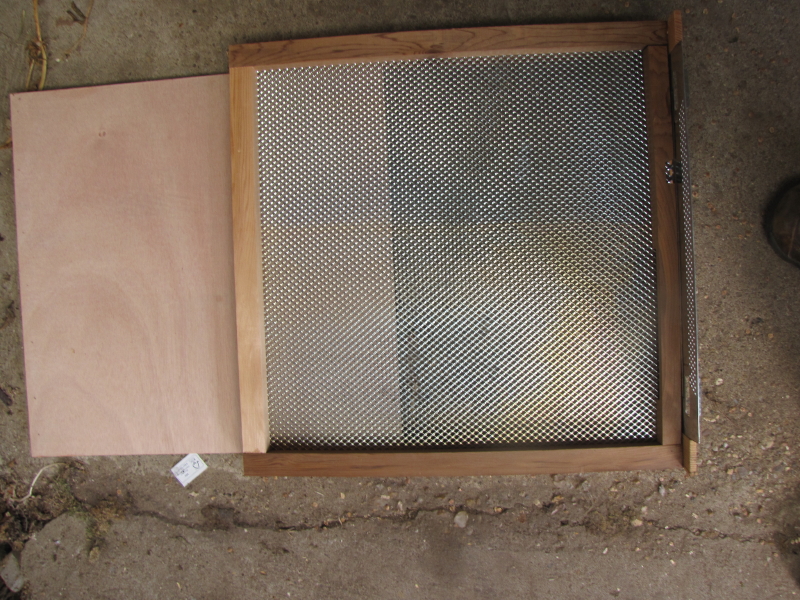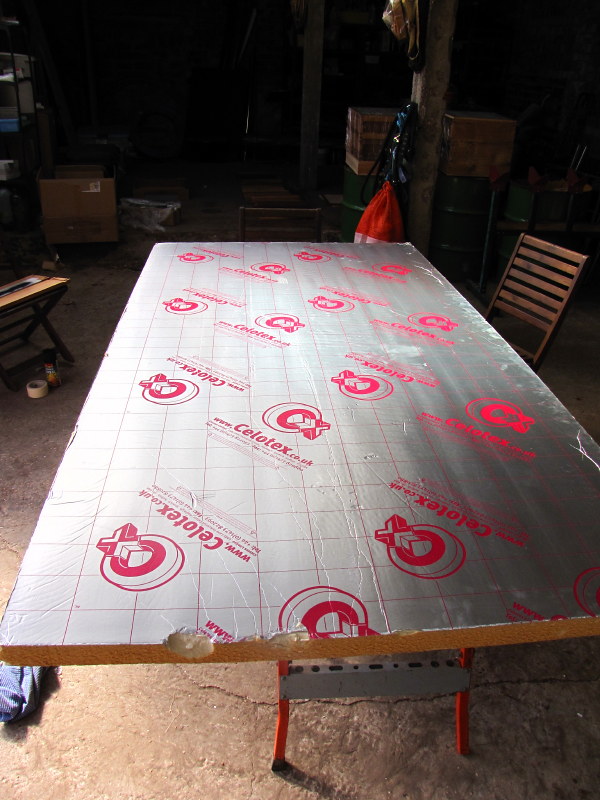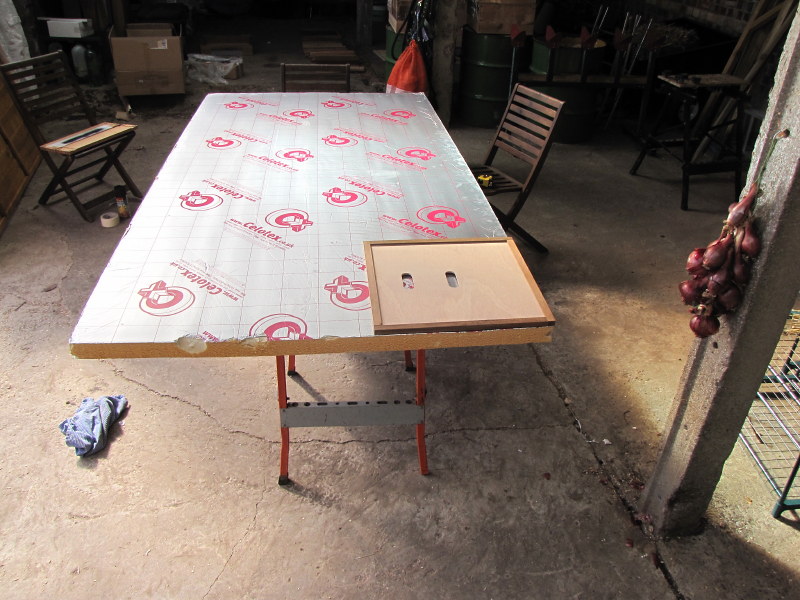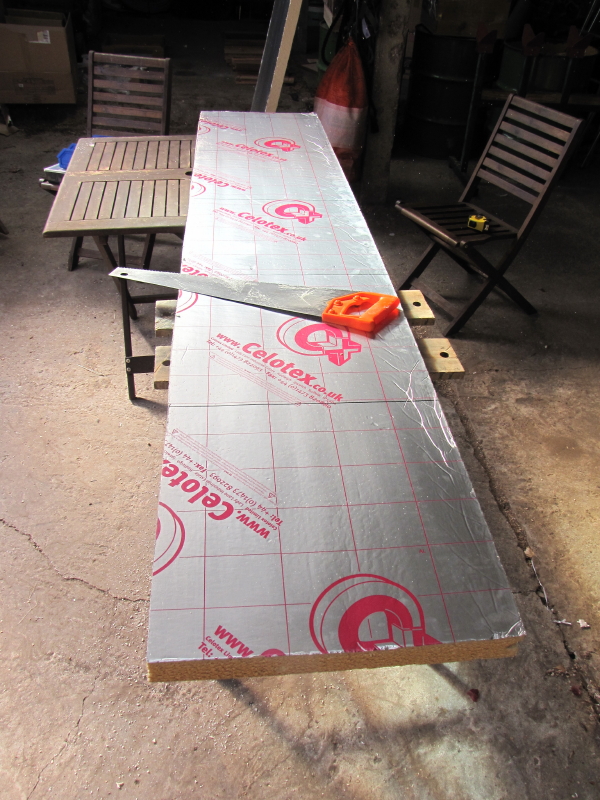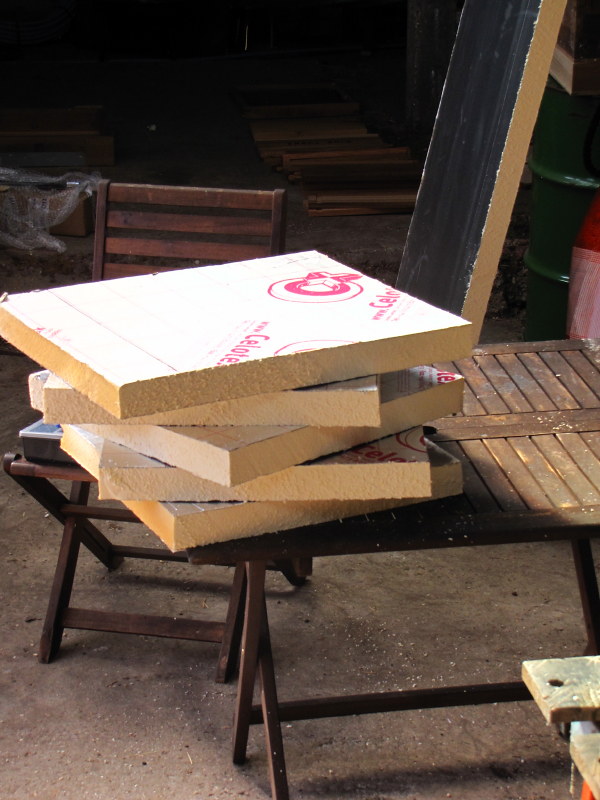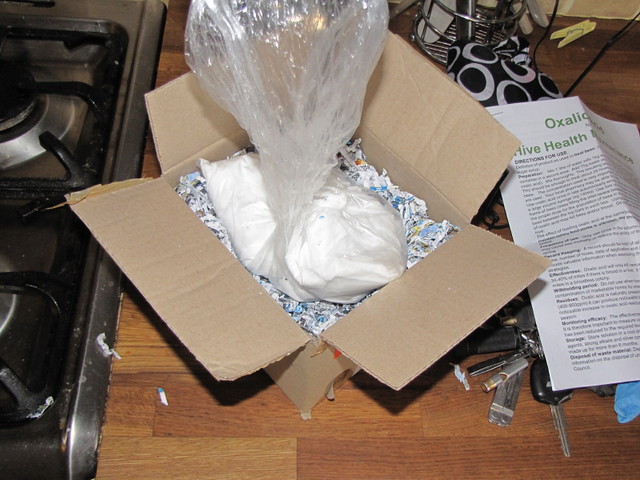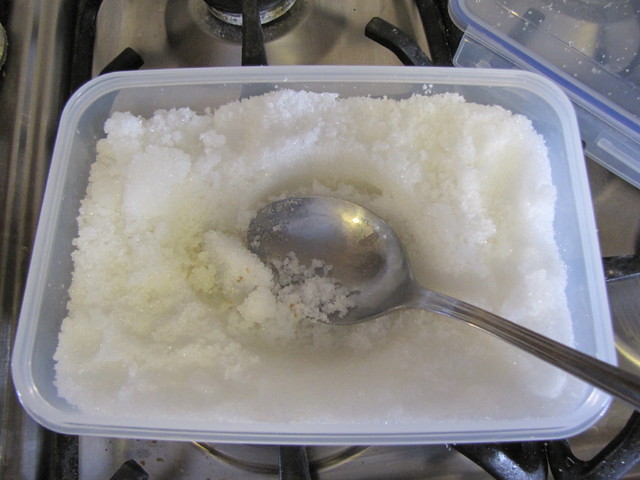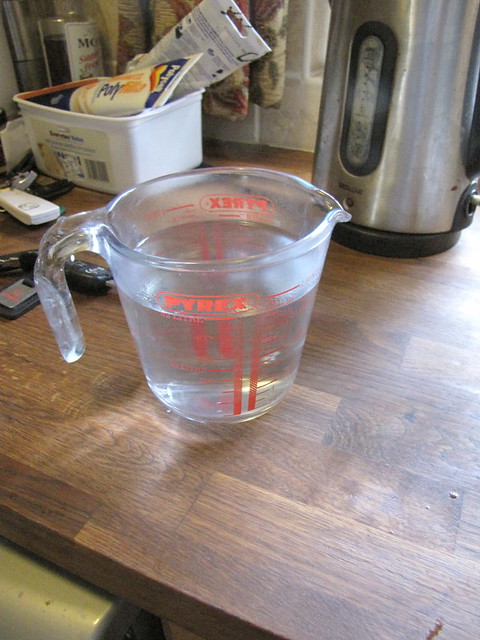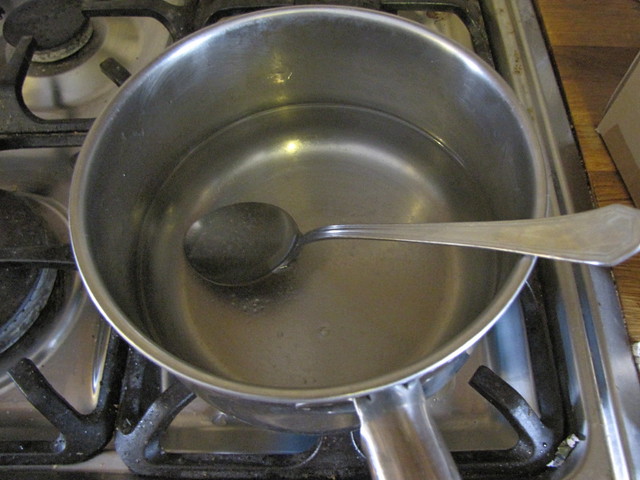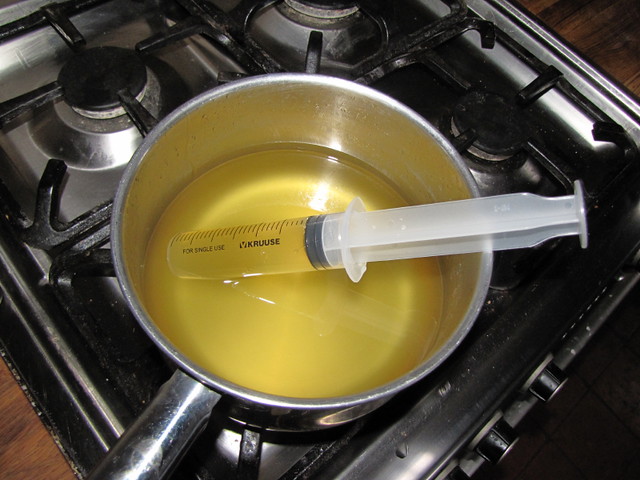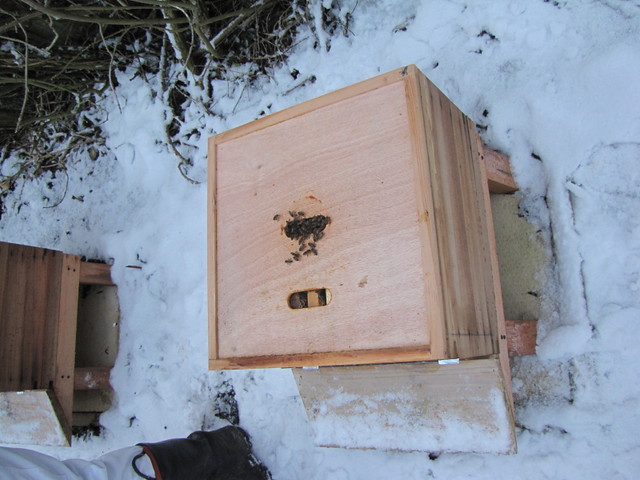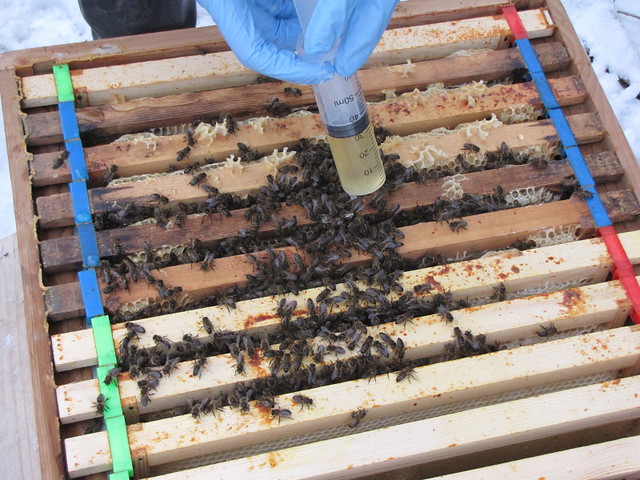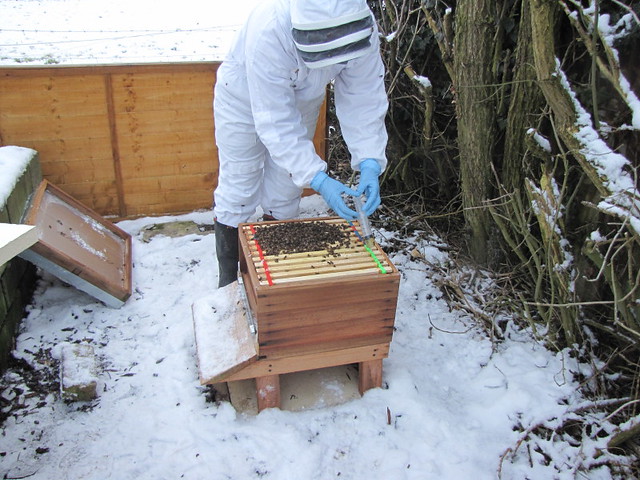Did our first full inspection today.....quite a nervous time. I took some photos which, on balance, was a dumb idea - should have done that on the next inspection when I was more confident - but as it happens, it was a useful thing to have a camera on hand.
So, we gave the bees some smoke. Removed the roof and the feeders.
Taking off the crown board revelaed that the bees had built some "brace comb" onto the crown board - this was scraped off with a hive tool.
Brace comb is what the bees use to extend and stabalise the frames - natural behaviour, but can make it hard to remove frames
 Brace comb on crown board
Brace comb on crown board by
British Red, on Flickr.
With the crown board off, you can pretty much see where the bees are working
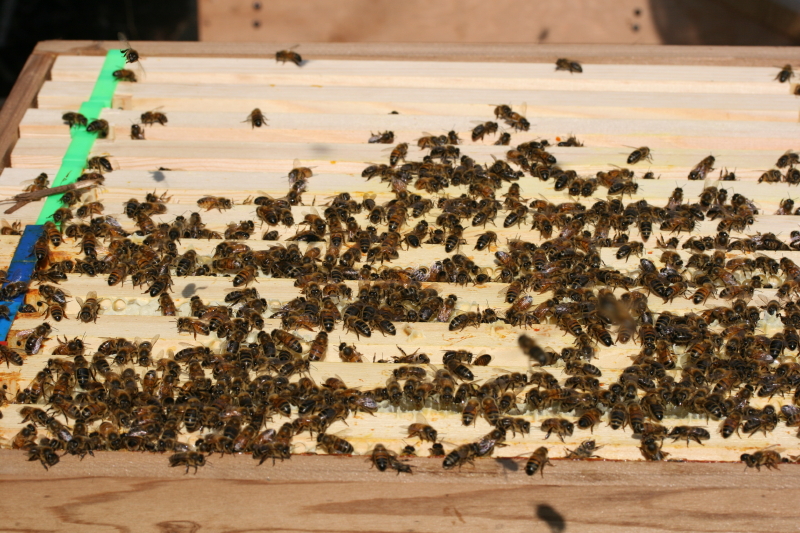 Lines of bees
Lines of bees by
British Red, on Flickr
Taking out the frame farthest from the nucleus frames shows unworked foundation and almost no bees
 Untouched Foundation
Untouched Foundation by
British Red, on Flickr
Moving further towards the nucleus frames shows a very different amount of activity!
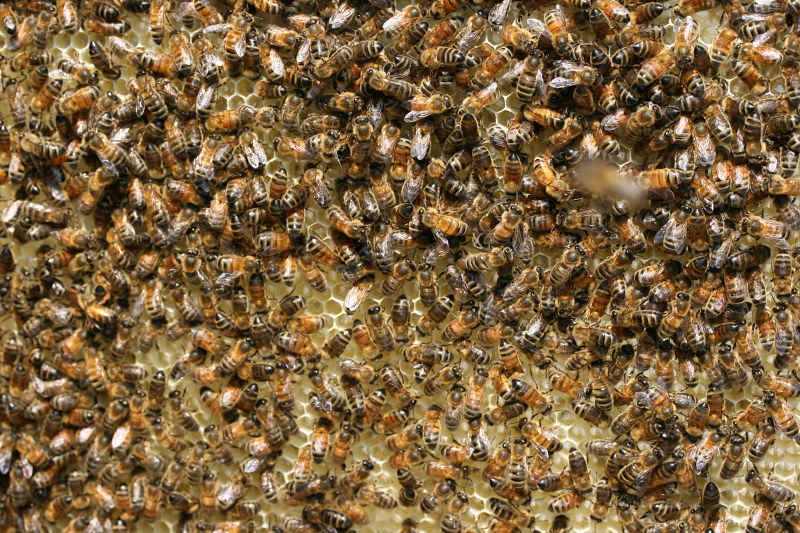 Busy Frame
Busy Frame by
British Red, on Flickr
Examining the frame under the bees shows that the foundation has been "drawn out" and is full of glistening stores
 Drawn comb and stores
Drawn comb and stores by
British Red, on Flickr
The foundation frame nearest the nucleus is full of stores and the bees are "capping off" the frame. This means the moisture content has dropped to below 18.5% (normally) and therefore the honey is stable and will not ferment.
 Capping Honey
Capping Honey by
British Red, on Flickr
We managed to spot the queen at this point - she is marked in yellow and, as you can see, much larger than the workers
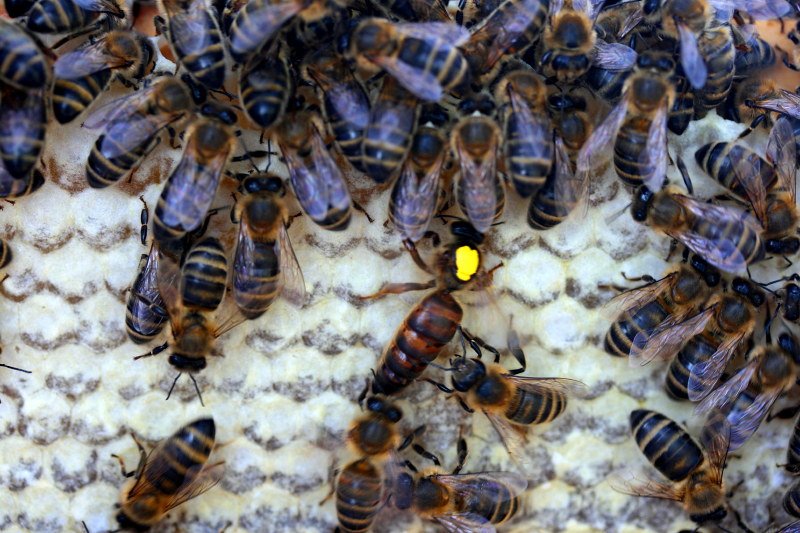 The Queen
The Queen by
British Red, on Flickr
Around this point we had a fright. Look at the black cells in the brace comb below the frame
 Brace comb, Pollen and Brood
Brace comb, Pollen and Brood by
British Red, on Flickr
One of the things we look for is "foulbrood" which has cells of black, nasty looking brood :shock: .
Closer inspection got me breathing easier - this is foul brood....
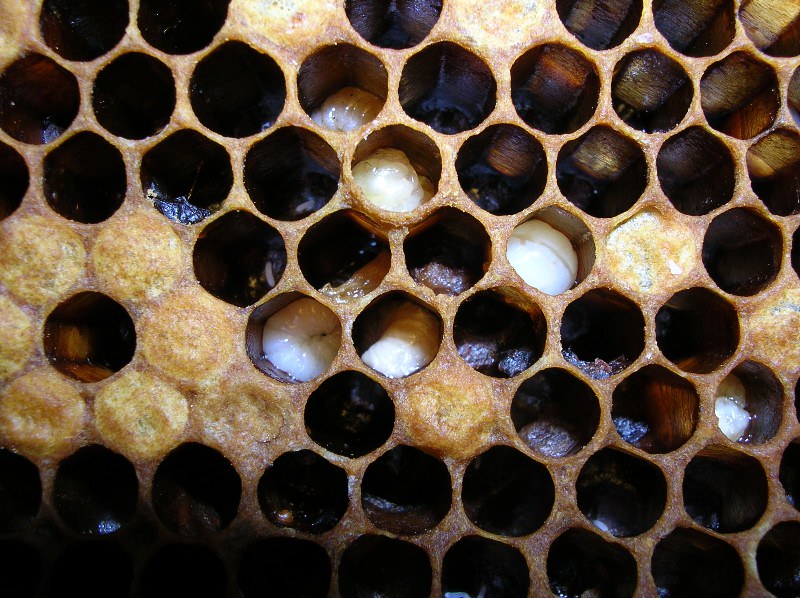 Picture Courtesy The Food and Environment Research Agency (Fera), Crown Copyright
Picture Courtesy The Food and Environment Research Agency (Fera), Crown Copyright
https://secure.fera.defra.gov.uk/beebase/gallery/index.cfm
The black cells in our hive are just dark, stored pollen.....phew
I'm not sure why the bees are drawing out below the brrod frames though - have emailed our mentor to see if he has a view....happy to hear from any experts who know
Thats it for now
Red













